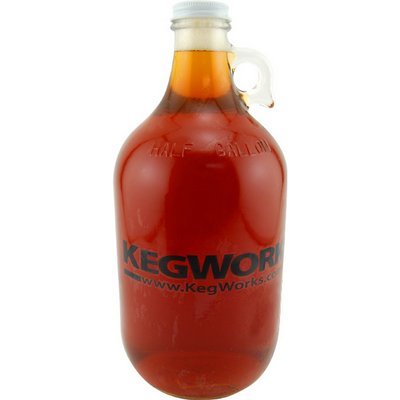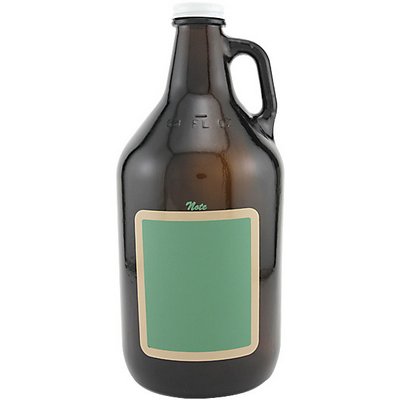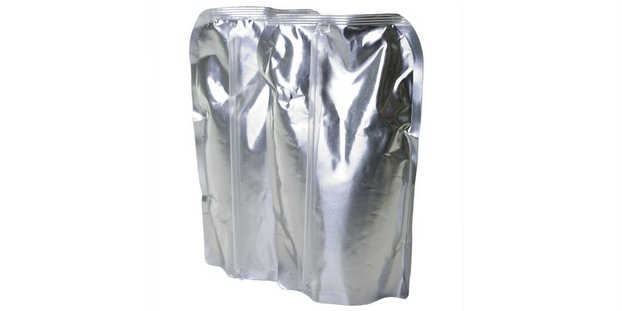
There you are, local craft brewer, with a great product, great on-site location and an interested customer. This is just the opportunity to extend it all — the fun, the product reach, the experience, the brand — by offering said customer the chance to buy a hefty jug of your finest, straight from the tap.
As the craft brewing industry rises, so too does the allure of the growler. Not all states have come around (we’re looking at you, Florida), but for those who are able, selling a growler is a valuable weapon in the craft brewing arsenal.
As defined by the Alcohol and Tobacco Tax and Trade Bureau (TTB), a “growler” is a large container, usually about a half-gallon, but sometimes smaller. The real distinction of the growler, though, is solely the manner in which the brewer fills the container — filling in advance of sale makes the growler a “bottle” and filling after purchase makes the growler a “large glass.”
The reason any of this matters, of course, is taxes. Again, according to the TTB, the tax on “bottles” filled at the brewery is determined upon removal for consumption or sale. Since the growler is a bottle in that scenario, tax is determined on the stated net contents. The tax on a “glass” filled on premises must be filled from a tank that is tax determined. The typical growler sale, most likely, would be that filled on-site as a “glass” from the tap on request.
It’s a growler world, we’re just filling it
“It’s pretty amazing,” says Peter Milkie, KegWorks Draft Beer Expert. “When I first started home brewing, growlers were only used in small circles of hardcore beer geeks. Now they’re everywhere.”

And why not? Let’s count the ways that growlers benefit us all. A growler:
- Allows the customer to take the brewery experience home, whether that’s the opportunity to bring back an all-time favorite from the tap or being able to transport a small-run or tasting room-only special.
- Enables a brewery to enlist a small but willing marketing army, equipped with logo’d products.
- Is a fun word to say, and fun thing to own.
- Lets the brewer diversify its delivery mechanisms for its customer.
- Is functional merchandise. It’s an optional, sometimes passion purchase that extends the elasticity of your on-site product and overall brand.
- Did we mention it’s just fun to say?
“Growlers have seen a tremendous upswing in popularity in the past year, which I’m sure anyone involved with the craft brewing space has noticed,” said Karthik Sridharan, chief executive officer of Kinnek. Kinnek is an online marketplace that directly links brewers looking to buy with a database of interested suppliers. Through the thousands of transactions moving the system, Kinnek has noticed the increased activity in growler sales through the platform.
So, we’re in agreement, having growlers available for purchase is a must-have item for any local purveyor of craft beer who is able. Before re-upping on that next order, consider the wide array of options.
“Recently, we’ve been seeing a number of breweries looking to more non-traditional growler types, including stainless steel growlers and ceramic growlers, in an effort to differentiate themselves,” he said.
KegWorks, a Buffalo-based bar and restaurant supplier has been carrying growlers for six years, and they offer a wide variety of sizes and colors. Aside from the standard 64-ounce glass and stainless steel growlers, KegWorks also offers one-liter glass growlers, an old-fashioned stoneware growler, leather growler holders, replacement caps and growler filling tubes. We wanted to know what growler styles were trending now and why.
“The clear glass growlers are great for businesses and consumers alike. They’re easy to fill without worry of overflows and spills, and they’re the cheapest option out there,” said Jason Rowley, KegWorks category manager. “The only problem with the clear glass option is its susceptibility to heat and light and the possibility of breakage. If you don’t have a cool, dark place to store your growlers, you might want to consider darker glass.”
“If you want something that also ensures against breakage and isn’t susceptible to light, then stainless steel is the way to go,” he continued. Further:
- Growler material is becoming more diversified. They’re not just glass anymore. KegWorks is seeing more made with stoneware and stainless steel.
- The sale of growler accessories, especially various types of holders and carriers, has really grown in the last 6 months. Other popular accessories include filling tubes, growler cooler bags and insulated growler sleeves.
- The sale of growler screw caps in bulk has really increased in the last six months.
- Novelty growlers, like those with the chalkboard surfaces have really hit a stride of popularity.
- Insulated growlers, used for hot as well as cold beverages, great for camping and other outdoor activities, are also garnering significant attention.
- A lot of it is centered around style more than functionality. Like most products, people are looking for that cool factor to distinguish them and show off their individual style.
So, what makes sense for your operation?
“Some people will argue that the down side to clear growlers is that they allow beer to become light struck and undrinkable,” Millkie said. “I would counter that beer spilled on the floor because you could not see how full the growler is, is also undrinkable, and costly to a brewer or retailer. Further, how long is it really going to take you to drink a growler of beer? If you are going to keep a growler around for a few days, you are most likely going to be storing it in your refrigerator or cooler, which should be dark.”
KegWorks recently added two chalkboard growlers, Hydro Flask growlers, made for hot and cold beverages, and plenty of transport options. In addition to strapped tote bags (good for blocking the light) and a car-carrier, KegWorks also now offers two wooden growler carriers, which they build and brand in their own fabrication shop.

On growler labels…
The bottle/glass distinction mentioned previously also matters when it comes to labeling. Know that the TTB mandates a growler label must contrast with the background, and if you silkscreen containers, the ink color must contrast with the filled container.
The Alcoholic Beverage Labeling Act (ABLA) of 1998 applies to sealed containers the brewer offers for sale to consumers. The ABLA does not apply to glasses or containers a brewer uses to serve beer at the brewpub. These containers do not meet the definition for a sealed container in which an alcohol beverage is offered for sale to the public.
Oddly though, the law applies to any keg or serving tank from which the brewer dispenses beer to containers. Brewers must apply a government warning label to the keg or tank regardless of whether the public can see it.
So, the “large glass” growlers are sold at retail and are not subject to federal label laws, but your state might have its own regulations to consider.
For any growler bottling taking place out there, here is the mandatory label information as laid out by the TTB:
- Brewer name or trade name
- Place of production — the place of production is the city, and, if necessary for identification, the state. The place of production must appear in direct conjunction with your name or trade name. If you operate more than one brewery you must choose one of these options: show all brewery locations on the label; show the place of production on the label; or show your principal place of business on the label. In the event that you select to show all your locations or your principal place of business, rather than the place of production, you must also mark your label with a code to show which location actually produces the beer.
- Net contents — show net contents as ½ gallon. You may use “64 ounces” in addition to but not in place of “½ gallon.”
- Do not make a statement as to payment of internal revenue taxes.
- Government warning label
Show us a beer drinker with a growler, and we’ll show you a fairly passionate customer. It’s important for your brewery to cultivate this passion when possible. Be sure your brewery has considered all of the options available, has stayed within the applicable regulations and is delivering the best product possible for this core audience.





RT @CraftBrewingBiz: Growler decisions:http://t.co/7MHOHCnVQk Large glass or bottle? Tinted, steel or clear? Do I need a label? #sundayread
RT @CraftBrewingBiz: Growler decisions:http://t.co/7MHOHCnVQk Large glass or bottle? Tinted, steel or clear? Do I need a label? #sundayread
“Growler Decisions.” http://t.co/XS8gT5xefd via @craftbrewingbiz What’s your favorite type of growler? #Drink #Beer
The #TTB has rules about the #labels on #growlers. Are you surprised. Here’s a good review. #beerlaw http://t.co/6TcO30oVX1
RT @WeberPackaging: Learn about growler packaging and labels here http://t.co/lLlJtqaGWq #CraftBeer @CraftBrewingBiz
RT @WeberPackaging: Learn about growler packaging and labels here http://t.co/A1kvhyO4GI #CraftBeer @CraftBrewingBiz
RT @WeberPackaging: Learn about growler packaging and labels here http://t.co/A1kvhyO4GI #CraftBeer @CraftBrewingBiz
Learn about growler packaging and labels here http://t.co/A1kvhyO4GI #CraftBeer @CraftBrewingBiz